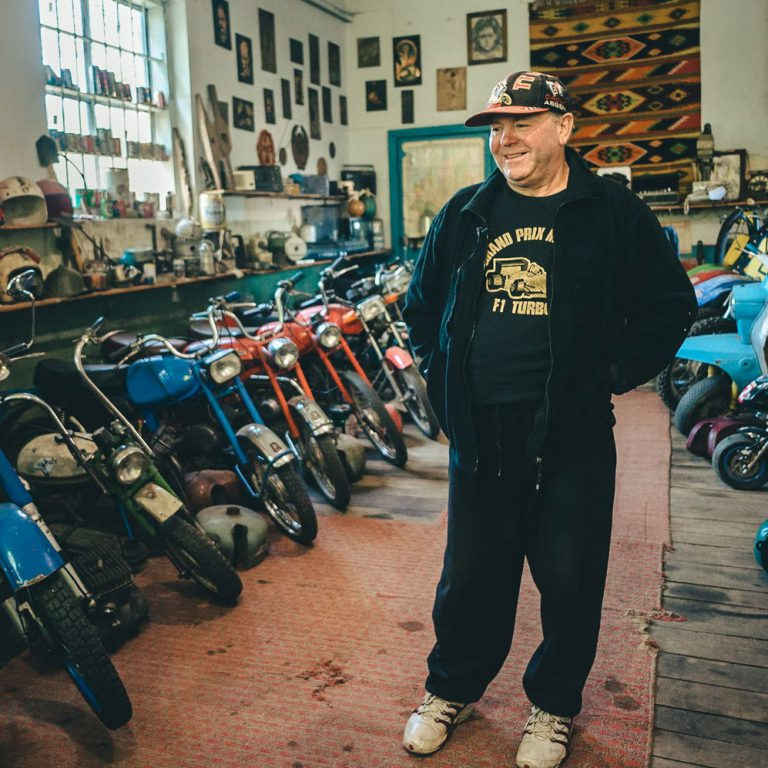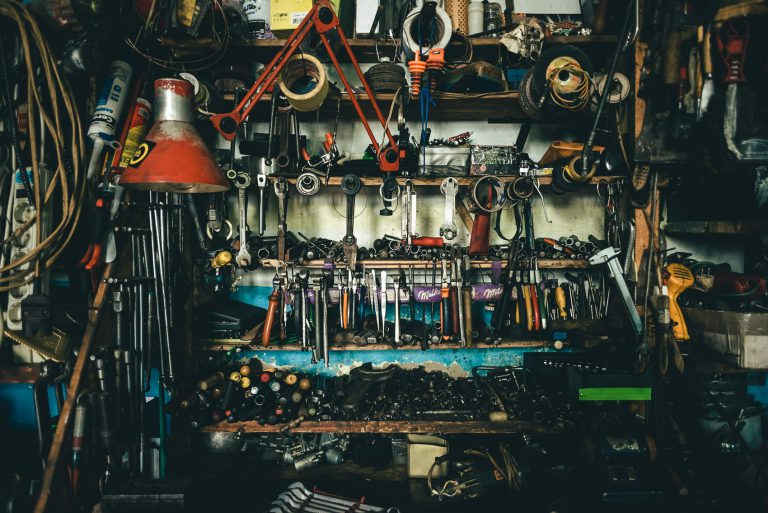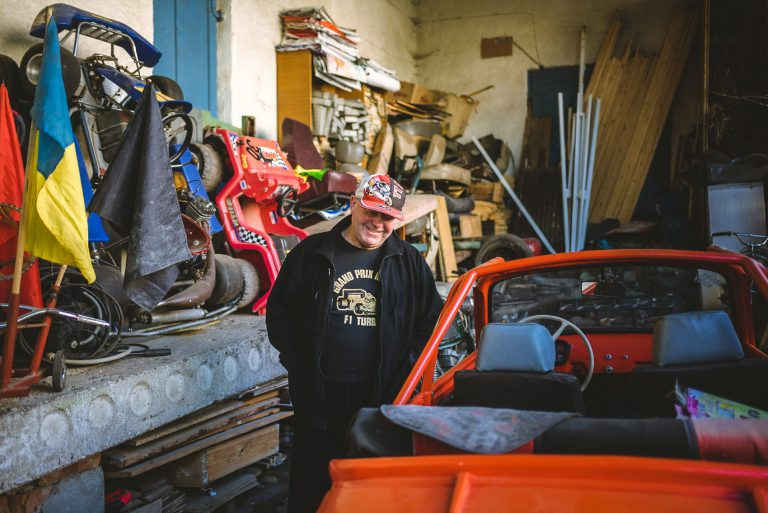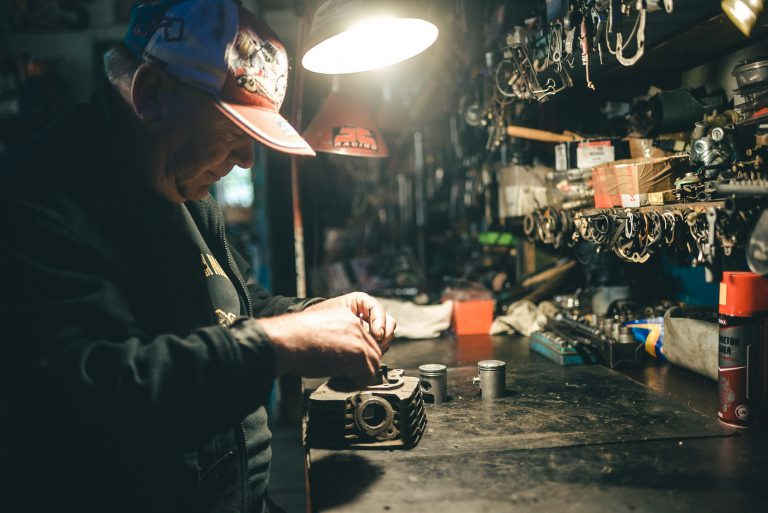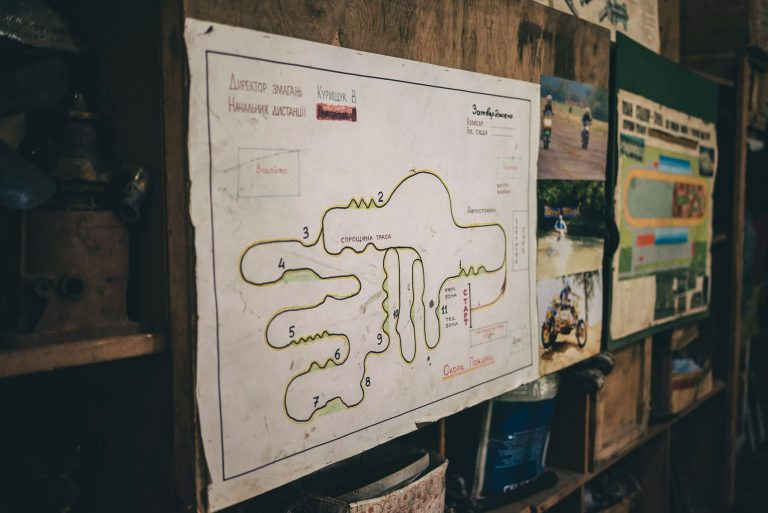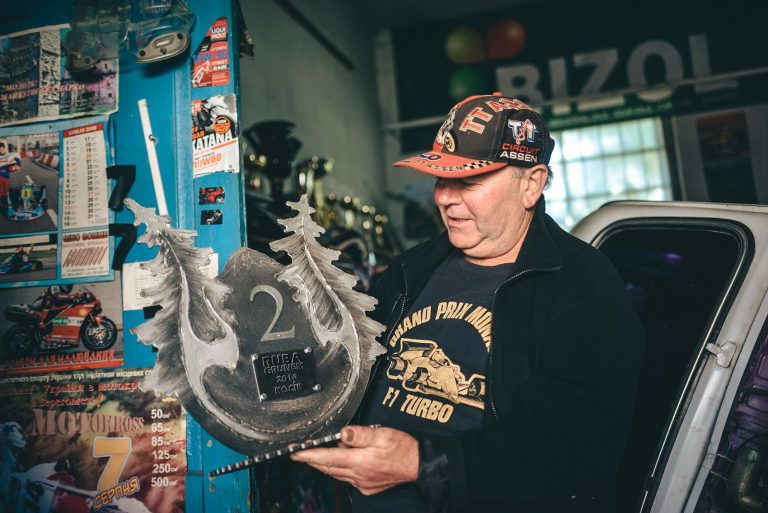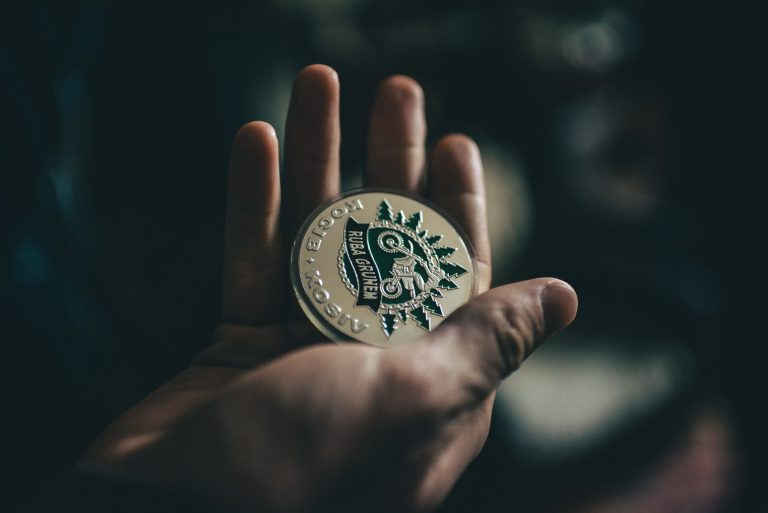The Carpathian town Kosiv, which is mainly known in Ukraine for its ceramics and the traditional market, has been also familiar to moto culture fans for a long time. A local enthusiast Vasyl Kuryshchuk has been developing it for 40 years. In the building of an old shed, he created his own workshop and mini-museum of antique motorcycles and cars.
Vasyl meets us near the entrance to the yard where we can see some motorcycles and cars waiting to be the part of his exposition. The door to the workshop is always open for guests – everyone can stay there for a night and sleep among the retro vehicles. Vasyl never refuses tourists the possibility to stay overnight in such extreme conditions if they want it. He even has a shower for his guests.
Moto culture in Ukraine
There had been motorcycles in Ukraine before the World War II, but most of them appeared after the war. Sometimes there were no horses in villages, and people tilted land with motorcycles fastening them to ploughs, as soldiers would often return from the war with these “iron horses”.
Today, the classics are German, Austrian, and Japanese models, and there are some historic prerequisites for it. Before the WWII, Hitler, who had been thoroughly preparing for the war, was shown the motorcycle models produced with BMW and Zündapp enterprises. He chose Zündapp to equip the army. However, BMW was quite a powerful company, and eventually, Zündapp became bankrupt. Later, in the post-war period, the Soviet Union exported all plants. For example, the IZh series was a DKW plant. Before that, the USSR had no own production: before the WWII, it had bought four series of BMW motorcycles via Switzerland to avoid buying from the plant. They disassembled vehicles, made some replicas of them and launched their own motorcycles before the war, but there were few of them.
At the Soviet days, a lot of replicas were produced: GAZ-51 as a copy of the US Studebaker or the 1st generation of Zaporozhets as an alternative to the Italian “people’s auto” Fiat-500; Viatka was an exact duplicate of an iconic Italian Vespa.
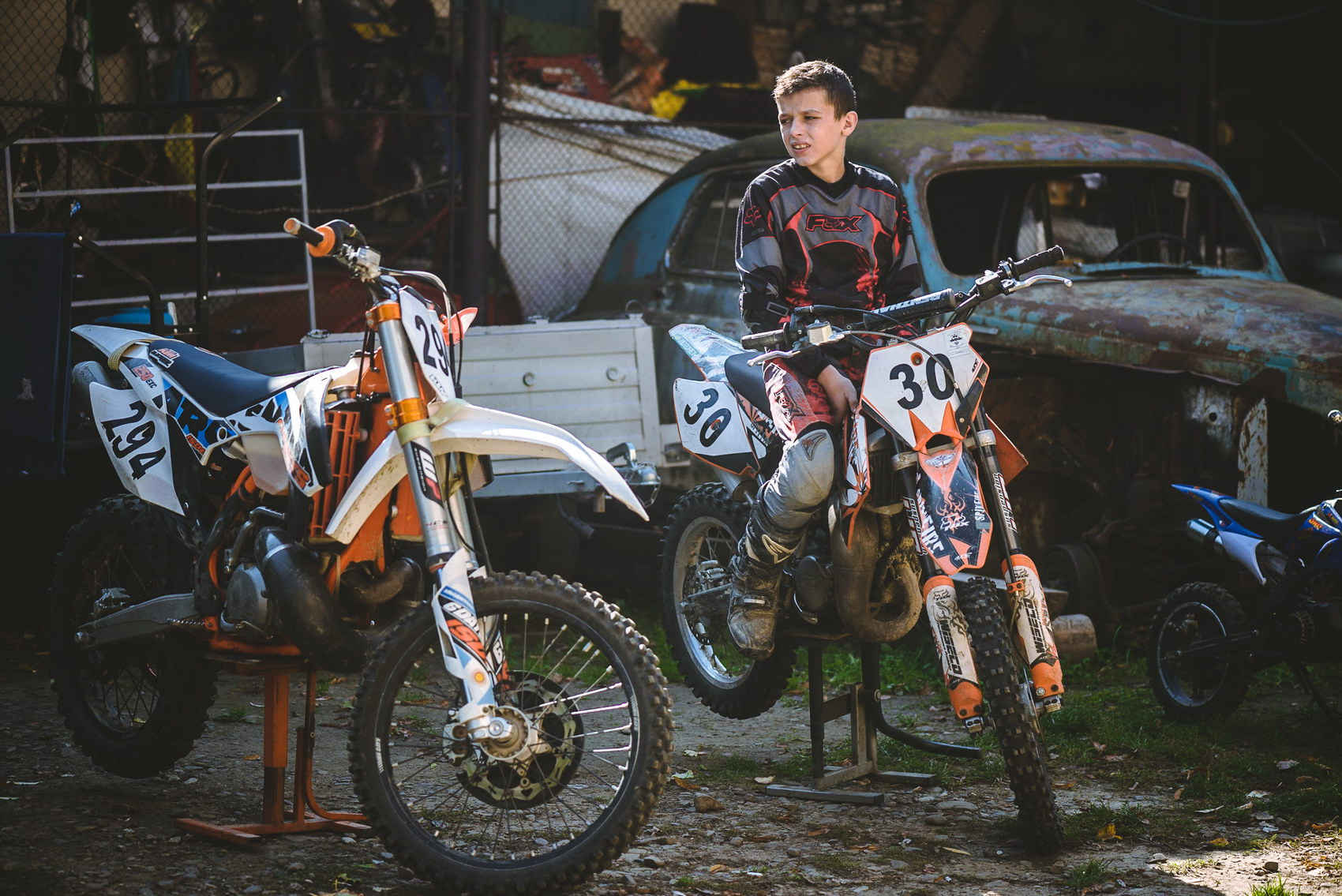
In the USSR, there were a lot of various competitions which first were mainly intended to train military men. In Kolomyia and Kosiv regions, the Championship of Motocross was held for both Ukraine and the USSR in general. The main goal was to test the endurance of machinery and people: sportsmen were prepared to defend their country. The main attributes of the competitions were shooting and grenade throwing and the winner was the one with the most precise throw. The route through Ukraine lasted for 3 days, and the USSR Championship continued for 5 days. The path was in mountains. The sportsmen drove about 400 km per day.
Today, such competitions to test the endurance of motor sportsmen are called “enduro”, and now they traditionally begin with a car exposition rather than shooting or explosions.
In the Carpathian town Kosiv, motocross, enduro, motor tourist (biker) culture, and country-cross are now actively being developed.
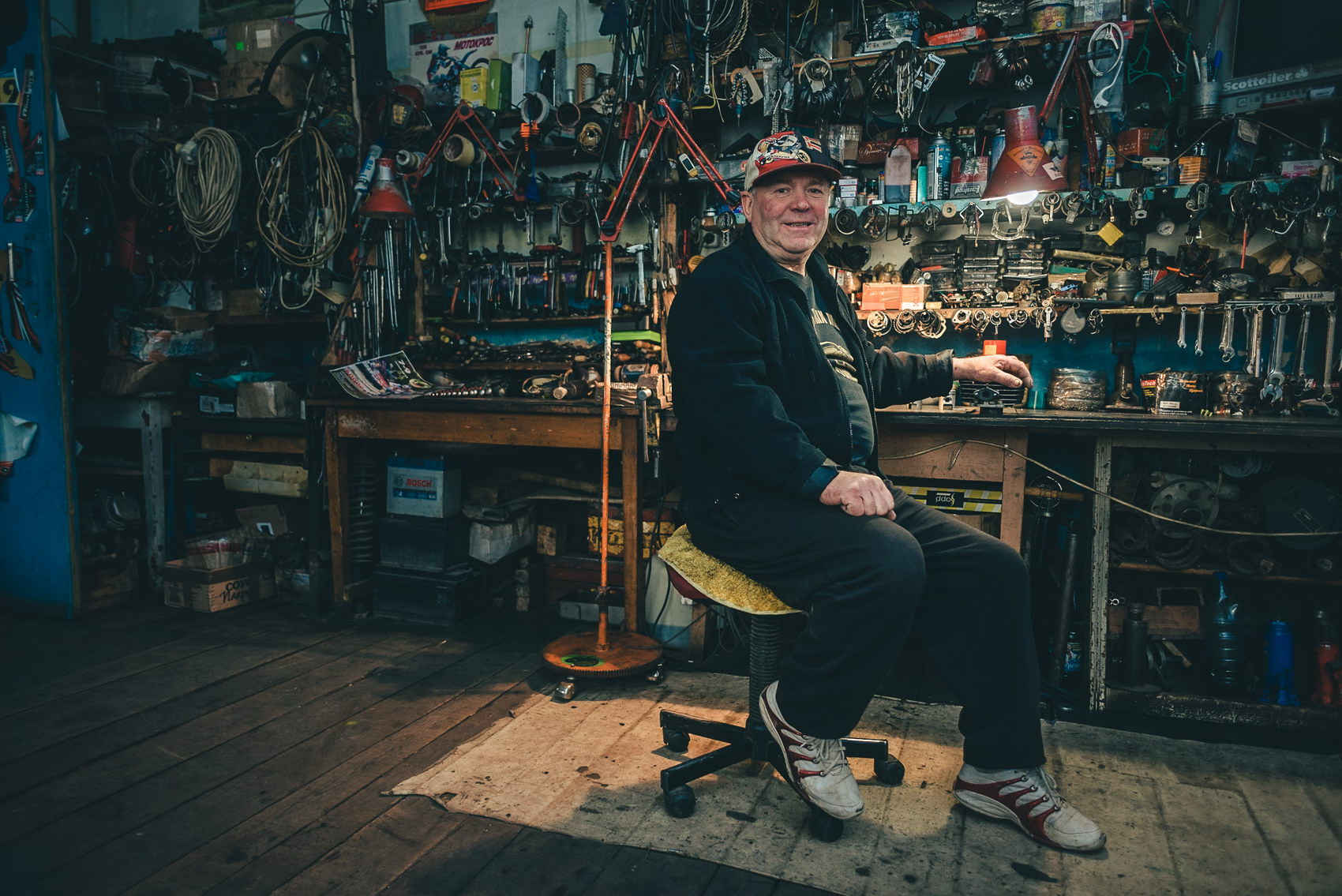
Forty Years of Passion for Motorcycles
ВVasyl Kuryshchuk is a local activist who develops motorsports. His passion for motorcycles and other vehicles has lasted for more than forty years:
— I’ve stuck with it. My whole life has been devoted to motorcycles. My father is a war veteran, my mother worked in Kolhosp (the form of a collective farm in the Soviet Union). No family members were involved with motorcycles. I remember when I was a little boy we used to watch the competitions and count the vehicles. We wrote down numbers of motorcycles. They were driving the first circle, the second one, the third, and we were noting the numbers. The motorcycles were dirty because they drove in the woods. Few of them would make it to the third circle. I will never forget the smell of a motorcycle, its smoke.
His passion influenced his relatives as well, as the whole family followed Vasyl’s example and started driving motorcycles: his brothers, son, daughter, nephew – all of them are drivers. He certainly knows his trade not only by its smell: Vasyl has practically furnished a place in the workshop where he can sleep if necessary, comfortably accept guests and teach his followers and the young generation how to drive, maintain or service the vehicles.
Workshop for retro motorcycles
In the premises which the district council provided to Vasyl to establish a club, he equipped not only the workshop. There is also a significant collection of rare motorcycles, cars and old things – the items of auto and moto culture, as well as spare parts of old cars.
– I do not like the word “museum”. It reminds me of “mausoleum”. The workshop for retro motorcycles! The word “museum” does not sound good.
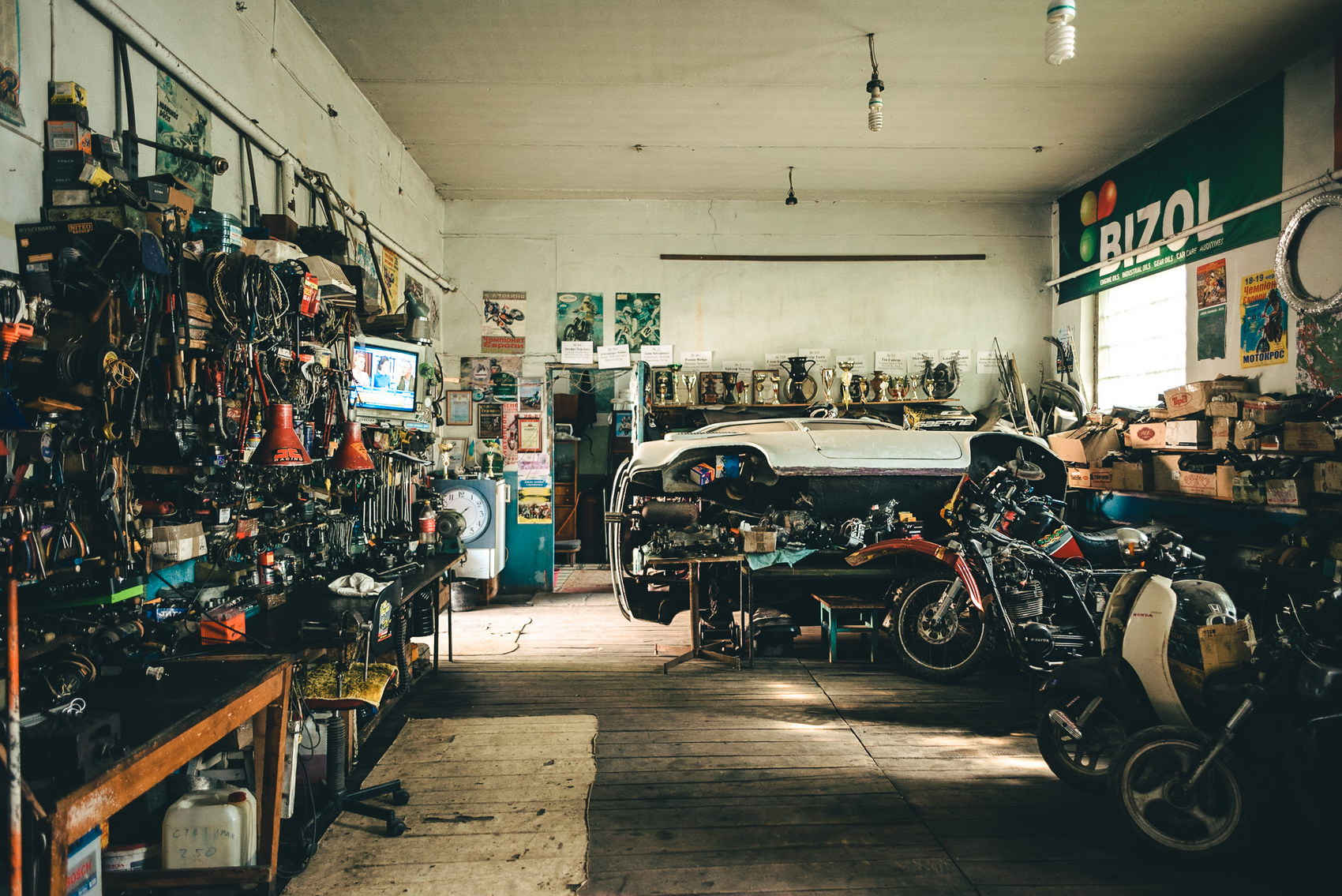
The collection is functional – almost all of it is in running state, except for those items which are being restored now. Working on it, it is important to find the appropriate materials. For example, I had to wait for the supply of wire for IZh:
— It was not made in plastic like all contemporary parts. The wire was made of fabric at that time. So we’ve ordered the wire online to install specifically the fabric one. And the work has stopped.
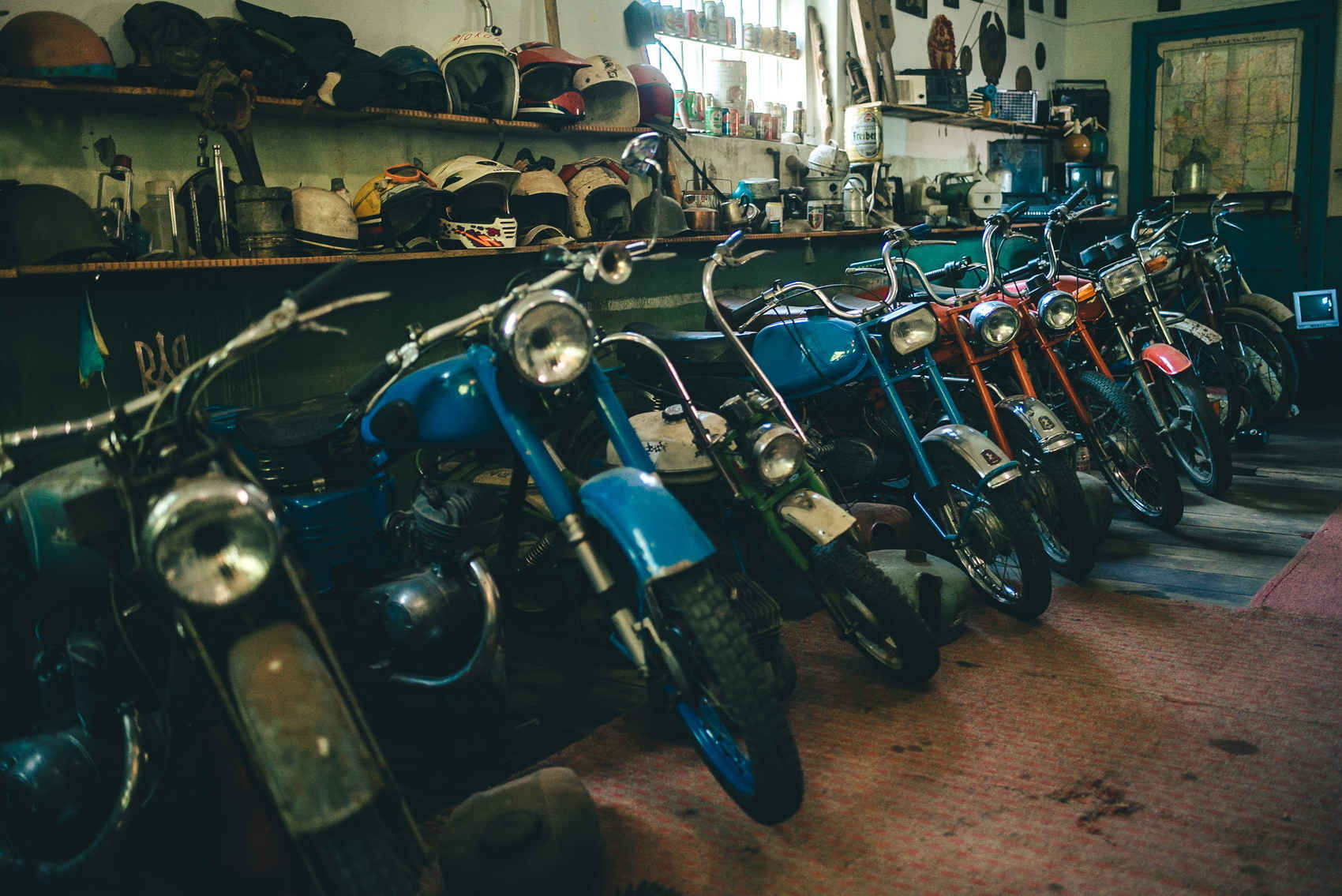
Vasyl Kuryshchuk has been gathering his collection for almost 40 years. Now it includes 15 motorcycles and 13 cars. The motorcycles are Gilera (the factory does not exist now) of 1984, IZh-49, K-750, MV-750, M-72, “Ural”, “Irbit”, and also the restored cars, such as “Zaporozhets” of 1964 and GA-63, which was produced for the army. There is also a Baltic mini-motorcycle which was a dream of all children in the USSR, as well as motorbikes and carts in the collection.
Each item of the collection has its own story: something was exchanged, others were bought, but the craftsman knows everything about each of his “iron horses”. He is also acquainted with BMW replicas which were produced in the Soviet Union after the WWII. Motorcycles and cars were made on the dies of the taken-out factories. Vasyl’s collection includes the duplicates of 1951, spare parts for which were produced on the German dies. Although K750, M, M72, and “Ural” series had their own dies, they were established later. After the WWII, all the vehicles were German. The taken-out BMW factory was partly launched in Kyiv, where “Dnipro” and K750 were produced. At the other DKW factory, there was a line-production of some famous Soviet brands, such as IZh, “Minsk M”, “Irbit”, and “Ural”.
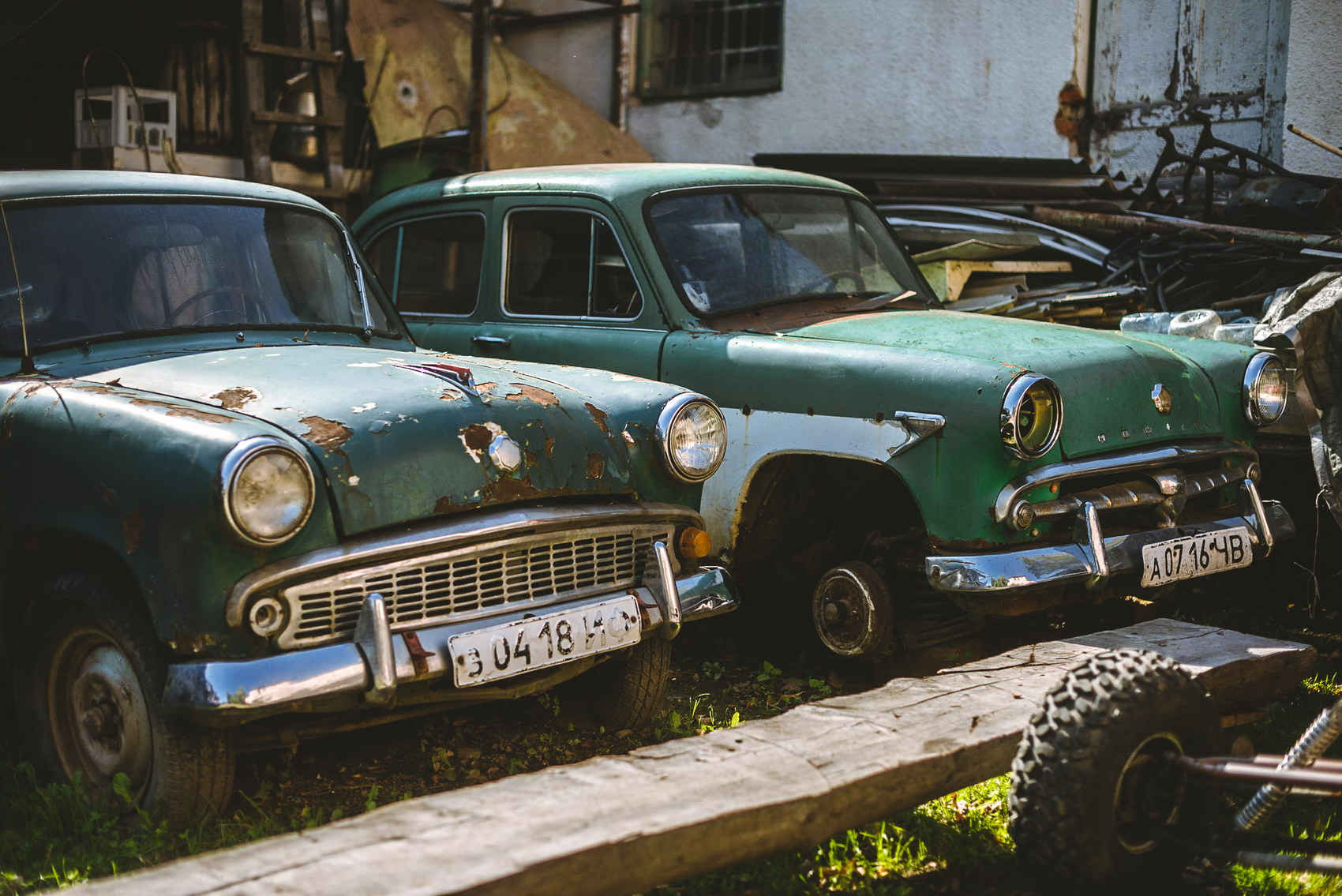
The USSR had various approaches to the production of the vehicles for people. Now you can observe it at the retro workshop:
— Here we have a Moskvitch, and there you can see an Opel. The difference is as follows: this is Moskvitch, and that is Opel. Moskvitch has four doors, and Opel has two doors. The rest is the same.
There is also a restored Zaporozhets; they search spare parts for it online, as no company now produces them, even the rubber bushings. But the car is also a replica:
— On the Internet, we found four rubber bushings in Mariupol. We placed the order, paid for it to get the parts. It is a copy of Fiat-500: the motor was produced in Melitopol, and the driving gear was taken from Volkswagen New Beetle (Volkswagen New Beetle — ed.). Khrushchov was once in Italy, and when he saw Fiat-500 he declared: “Make a car for people”. And they (USSR — ed.) started to crank out cars “for people”. We have a joke: the motor is at the bottom because that is where a thought to put it there appeared. But still, those cars were on the go!
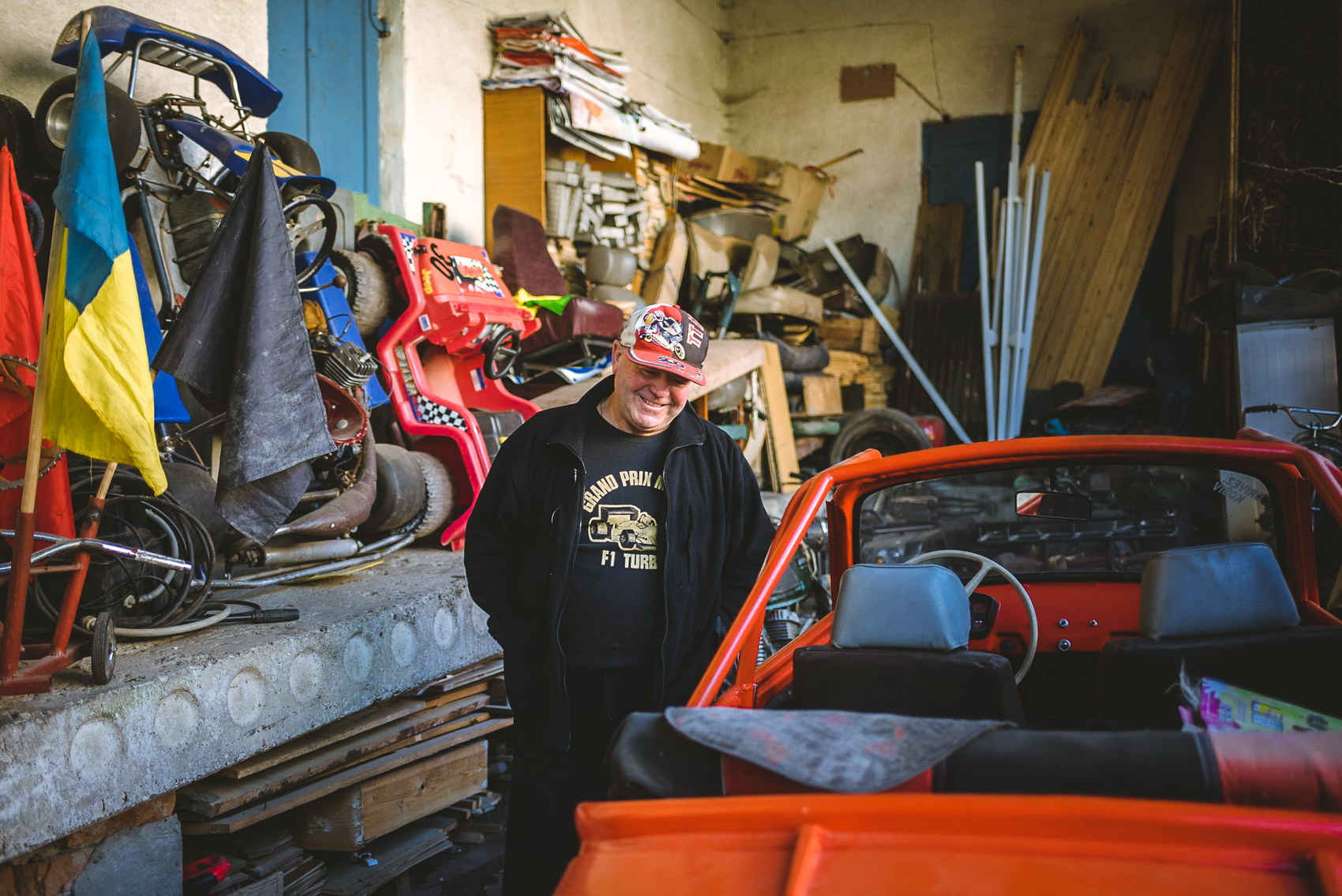
A humpbacked Zaporozhets had a good cross-country capability back then. It used to be the best car to drive in winter because it had off-road qualities: the best car to go fishing or for auto tourism back in those days. Today, the restored Zaporozhets Cabriolet is a gem of the workshop; it is used for driving just on exhibitions and parades. At Christmas, it was even lent to the neighbouring village for Malanka (Ukrainian folk holiday celebrated on January 13) to make a performance of the movie “Kidnapping, Caucasian Style.”
Every motorcycle is important to Vasyl Kuryshchuk, and it has its own story. The exhibits he values the most are those which have all original parts, even the paint applied at the factory. The most important activity for the collector is to preserve factory-assembled motorcycles, with no paint applied – the way it was on the run back in the last century. However, the collection is versatile:
— The oldest motorcycle is “Moscow” made in 1949. It is a replica of the German DKW. It was called DKW RT 125, and the Russians called it “Moscow”. We have never had an intention to collect the old things, as it is an expensive hobby. Mostly, we develop sports and tourism, and the workshop; the restoration or the collection are optional.
slideshow
The restoration of old autos and motor vehicles has its peculiarities:
— I had a motorcycle to restore which was brought from the WWII and then disassembled and put to the strykh (dialect form for “attic” — ed.) where it was kept. A man who had brought it died and his grandchildren sold the house and did not even know about the motorcycle at the attic. The motorcycle DKW is an original German vehicle made in 1932. We restored it, and the people who had bought that house to establish a cafe took it back and put it for the history.
The workshop attracts visitors with its exhibits, working atmosphere, a great number of spare parts and other stuff as well as with the opportunity to stay overnight there, as Vasyl has a partly equipped place for sleeping. He had foreign guests as well – the participants of the World and Europe championships, especially from Germany and the Netherlands.
– They came to Kosiv region just to sleep among the retro vehicles, because they are such people, you know. They have this vibe!
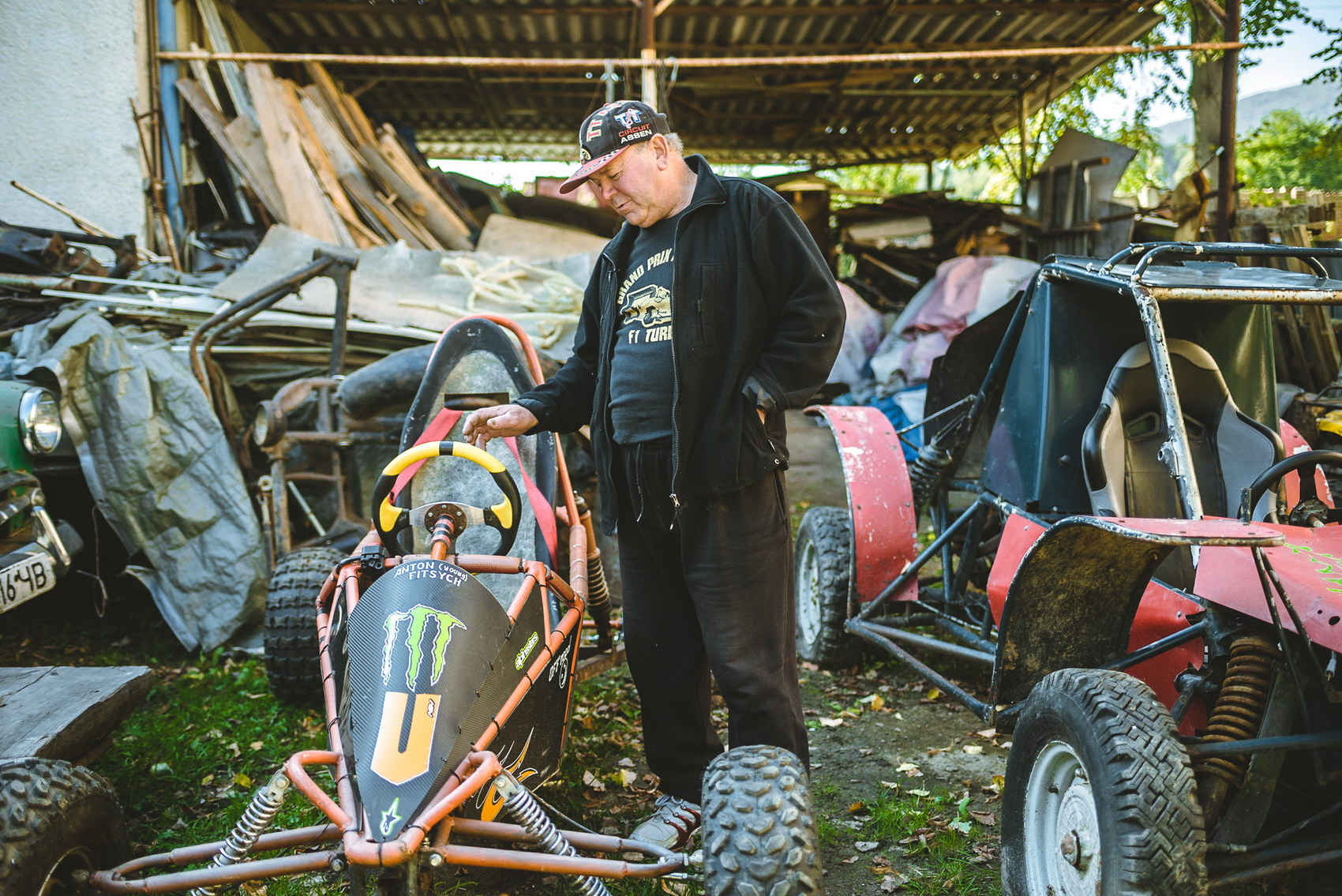
We have plans to open a hostel to take in the trainees and sportsmen of the training or competitions which have become traditional for Kosiv.
A Motorcycle Club Called “Highlanders”
The collection is just an addition to the main activity. Basically, Vasyl Kuryshchuk is the CEO of the motorcycle club called “Highlanders”. The club needs maps, Japanese and Austrian motorcycles for its youngest members, and everything that is necessary for training.
But actually, it is the direction to develop sports, auto and moto tourism that has impacted the integral combination of the workshop, the place for restoration, and the collection. Everything is in one place, where sportsmen and auto and moto travellers can stay. But the most attention is paid to children: a moto school and driver teaching are organically entwined in the activities of the club that is extensively engaged in the growth of the young generation. The youngest members had joined the club before they came to school, and the first-graders already take part in competitions. That is the place where children can develop their driving skills, engineering way of thinking, they learn how to take care of vehicles, how to get rid of fear and, most importantly, this is an alternative to the online environment. The club is also acknowledged for its adult victories.
slideshow
The motorcycle club has been among the best of three clubs in team scoring at the competitions over several years. The club members do not count their personal achievements, as there are a lot of them. The sportsmen get their qualification and then present Kosiv at many competitions and auto and moto events both in Ukraine and Europe:
— Vitalii Kuryshchuk was the first in Kosiv region who achieved the standards to obtain a master of sports. Vasyl Andrytsuliak has already become a master. And there are also junior categories. It is hard to do it because one needs to spend a year of training and competitions and to obtain scores from race to race. The scores are summed up, and the result is measured at the end of the year. If you get the place 1 to 3 at the championship of Ukraine, you comply with the standards which are now further improved.
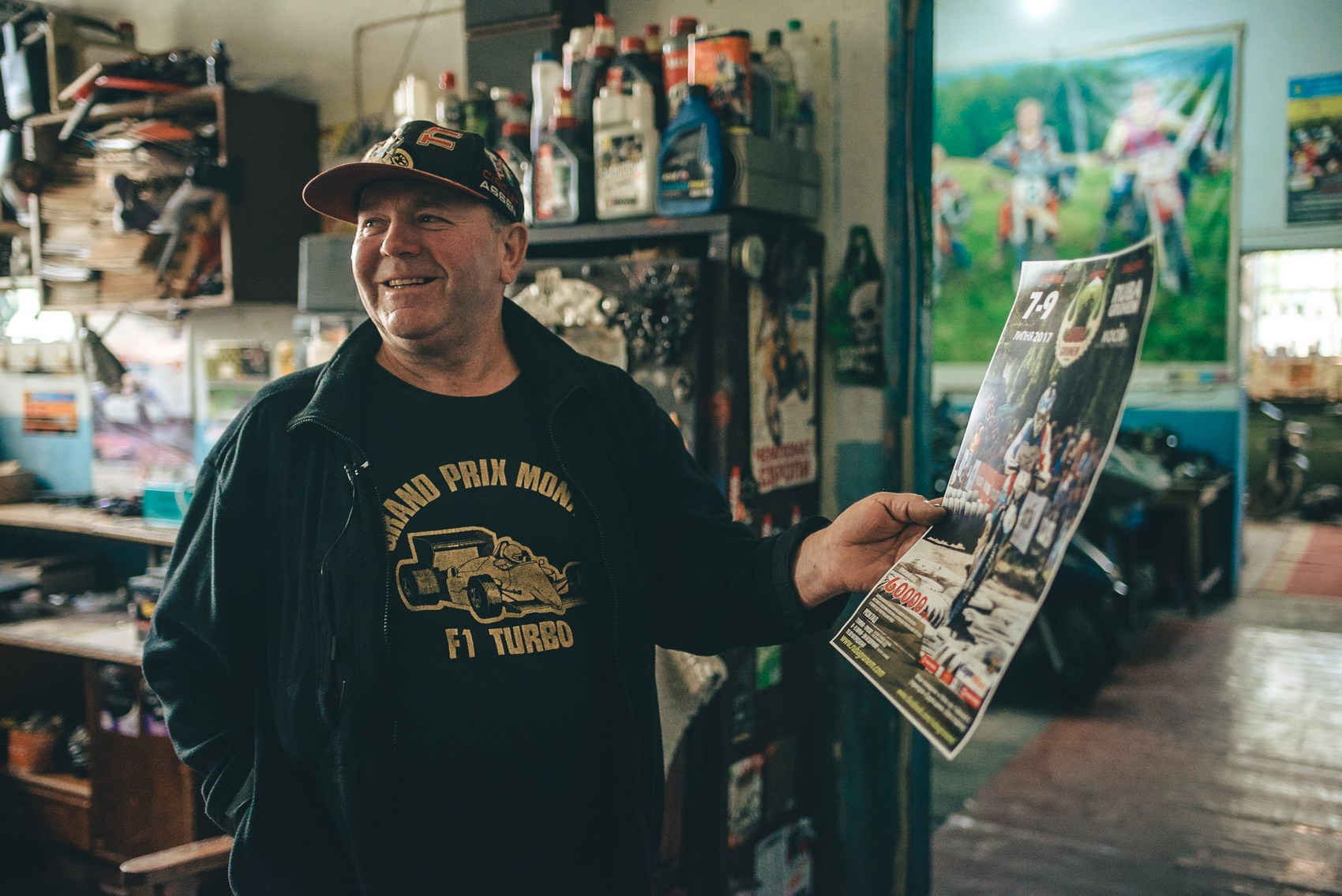
The core of the club is approximately twenty people who cannot imagine their lives without motor vehicles. Some leave to work abroad to buy a motorcycle. Others join instead:
— It is an expensive activity now. Kosiv is a small country town. It is hard to stay there.
However, there are always those whose way of life is strongly linked to motorcycles. When the club takes part in competitions, its sports fellows from other cities are always surprised: it has a team of adults and children, various disciplines – everything is estimated and taken into account, and there is a team scoring as well. Bikers also joined the club, and they are trying to regenerate moto tourism now.
The club arranged a place for motor track for their own needs, and they also put the wooden obstacles for enduro training. Every year they hold the parades of retro vehicles at memorable dates of Kosiv. Besides, they developed a route for Ruba Grunem competitions which stretches through the forest and along the populated areas (the length is 100 km):
— The race is called Ruba Grunem. “Grunem” means land, “my land in the mountains”. And “Ruba” means a competition, a race. Call it a ship, and it will sail. And so we “sailed” with this name.
In 2017, we had three complete tracks at this competition for the sportsmen of different levels: professionals, amateurs and those who take it as a hobby. The average circle was 30 kilometers long, and the sportsmen drove four circles per day. Such an event was possible thanks to the sponsors and the local authority. Vasyl sincerely believes that in course of time they will be able to invite sportsmen from all over Europe to Kosiv.
How we were shooting
Watch how we took part in TEDx in Ivano-Frankivsk, how we managed to get acquainted with a wonderful family of potters in Kosiv, and how we visited the motorcycle workshop there.

